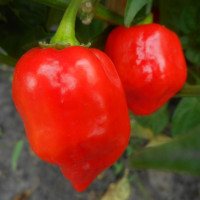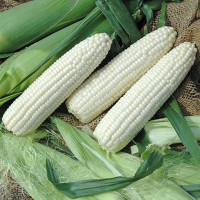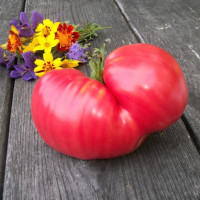Popcorn miniature blue «Hopi» - grains of blue color, very small. This plant has a long history of use as a food and drink colorant, and as a raw material for the fermented alcoholic drink chicha morada. Recently it was found that the blue color of corn is due to the presence of the highest amount of all known fruits and vegetables anthocyanins, which provide the cereal with powerful antioxidant, anti-inflammatory and antitumor properties.
Blue corn differs from ordinary corn not only in color. One of its benefits is also that it contains 20% more protein and has a lower glycemic index than white corn. Experts note that blue corn grains have a distinct nutty flavor, and dishes made with blue cornmeal have a subtle sweet taste.
Hopi corn has many varieties and ranges in color from light gray through red and blue to almost black. On one cob, grains of different colors can be combined, and such plants are used as ornamentals. The main varieties of this cereal included in the registry are standard blue (Sakwaqa'o), hard blue (Huruskwapu), and gray blue (Maasiqa'o). Despite the abundance of varieties, farmers cultivate a fairly small number of varieties.
While acknowledging the differences in varieties as such, some growers explain that they are currently mixed together, especially sakwaqa'o and maasiqa'o. The current blue corn craze among American consumers (blue corn chips, for example) is accompanied by the growth of blue corn seed companies. The availability of varieties of this cereal on sale can have an impact on the direction of Hopi agriculture and social activities.

No questions about this product, be the first and ask your question.















